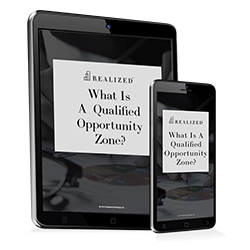
Qualified Opportunity Zones (QOZs) were established in the Tax Cuts and Jobs Act of 2017. The actual zones were determined in 2018. Opportunity zones cannot be amended at this time. The tracts were developed to give potential tax incentives to new investors in low-income and distressed areas and promote long-term investments and economic growth.
To establish QOZs, governors submitted proposed tracts, and the U.S. Department of the Treasury certified the zones in 2018. The majority of the zones are in distressed zip codes that will likely benefit from new investments in businesses and housing in the area.
Criteria for Opportunity Zones
For a governor to request an area as a qualified opportunity zone, it must meet certain criteria and be considered a low-income community. This is defined by meeting one of the following criteria:
- A poverty rate of at least 20%.
- A median income of below 80% of the statewide median family income.
- If located in a metropolitan area, a median income of below 80% of the metro area’s median income.
There are currently 8,760 approved opportunity zones. This makes up 12% of the U.S. Census tracts.
Investing in Qualified Opportunity Zones
Investments in QOZs are made through Qualified Opportunity Funds (QOFs). This type of fund is a corporation or partnership and is formed to invest primarily in community zones. Investments can be made into a QOZ even if the investor does not live in an opportunity zone.
There are several potential tax incentives for investments in opportunity zones through QOFs.
- If an investor re-invests capital gains into a QOZ, they can potentially defer federal capital gains taxes.
- Investors who hold their investment for five or seven years have the potential to reduce their tax bill on capital gains by 10% or 15%, respectively.
- Investors who hold their investment for ten years have the potential to waive all federal capital gains taxes on realized gains.
To qualify as a QOF, the fund must hold 90% of its investments in opportunity zones. There is currently no way to amend or add opportunity zones as they were set in 2018.



